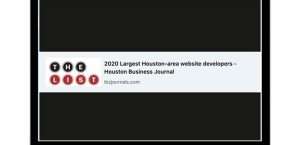Information Architecture: Principles, Best Practices and Tools
Information Architecture in today’s digital world has become a requirement then just a need to organize your information. While you may have good content for your end users, it is also important that it is presented in a way that is understandable by most or if possible all of your target audience.
This article gives you a high-level understanding of what is information architecture, principles of good information architecture, IA context and IA Development. Every topic can be explained in more detailed however the goal of this article is to provide a high-level understanding and showcase the elements involved in information architecture development.
What is Information Architecture?
A very simple definition would be to “Make things findable and discoverable”, a little more detailed definition is “The organization, search and navigation systems that help people complete tasks, find what they need and understand what they have found.”
The structural design of information systems, interactive services, and user experiences.
3 Principles of Good Information Architecture
- Point of View
- Information Scent
- Conventions & Standards
IA Context
- Content
- Content Inventory is usually the first step
- The main goal of this step is to find and list existing content. For existing systems you can make use of site crawling tools like xenu linksleuth, basic site crawler, screaming frog etc.
- PowerMapper is another tool that can crawl your website, generate sitemaps and provide outputs in cvs and also visualizations of your site content, which is also a really helpful visualization during Content Inventory
- Content Inventory is usually the first step

https://www.powermapper.com/
-
- Content Audit The main purpose ofcontent audit is to evaluate existing content and identify content needs. Often includes
- Purpose
- Intended audience(s)
- Accuracy
- On message?
- Traffic
- Calls to action
- Consistency with style guide
- ROT(Redundant, Outdated, Trivial)
- OUCH(Outdated, Unnecessary, Current, Have to Write)
- Content Audit The main purpose ofcontent audit is to evaluate existing content and identify content needs. Often includes
One of the tools I used was blazecontent. You could also use MS excel or other tools for content inventory and content audit, I personally found blazecontent to be very helpful.

Website URL: https://www.blazecontent.com/
-
- Content Gap Analysis: The main tasks in content gap analysis is to
- List user tasks
- Map existing content to user tasks
- Identify gaps, where content is necessary to complete tasks, is either missing or inadequate.
- Content Gap Analysis: The main tasks in content gap analysis is to
Example of Content Gap Analysis

-
- Content Modeling:
- List essential content objects and how they relate
- Break down complex subjects into the aspects people actually care about. (Eg for health: symptoms, diseases, treatments)
- Identify critical connections and avoid content silos
- Content Modeling:
Example Content Models

-
- Content Models (Visualize Relationships and Paths)
- Visualize it first
- Understand the natural shape of your content before imposing predetermined structure
- Identify gaps and opportunities
- Tools
- Mind mapping tools: Mindmeister,iMindMap6, Freemind
- Pen & paper/stickies
- Visualize it first
- Content Models (Visualize Relationships and Paths)
- User and Business Needs: Understand your user and business needs and some of the information about users could be gained by
- UX/Design: Usability tests, field research interviews
- Customer Service: Support requests, user comments
- Engineering: Traffic analytics
- Marketing: Surveys, interviews, focus groups
- Product Management: Customer briefings, market descriptions
- Sales: Sales data, account profiles
- Internal Sites: Employee surveys, company demographics, job descriptions.
Create personas and scenarios so that your focus stays on designing for your audience and not yourselves, it creates understanding and empathy towards your users.
IA Development
- Organization Schemes
- Selecting and Combining Organization Schemes
- Card Sorting
- Labels
- Use of Good Labels and analyzing the quality of labels
- Label Auditing
- Structure
- Hierarchies and Linear
- Site Maps and Task Flow Diagrams
- Tree Testing
- Taxonomy
- Metadata
- Information Retrieval Goals
- Creation and Governance
- Search
- Effects of Metadata
- UI Conventions.

Filter by Category:
- Construction
- Corporate Business
- DevOps
- Digital Marketing
- E-commerce
- Enterprise CMS
- Environmental Services
- Government
- Graphics Design
- Healthcare
- Hospitality
- Industrial
- IoT
- Logistics
- Manufacturing & Engineering
- Medical
- Mobile Apps
- Mobile Apps
- News
- Oil and Gas
- Portal / SharePoint
- Residential & Commercial Energy Services
- Retirement Plan Advisory & Third-Party Administration(TPA)
- SaaS Portal
- SEO Optimization
- Service
- Transportation
- Uncategorized
- Web Development
- Work










